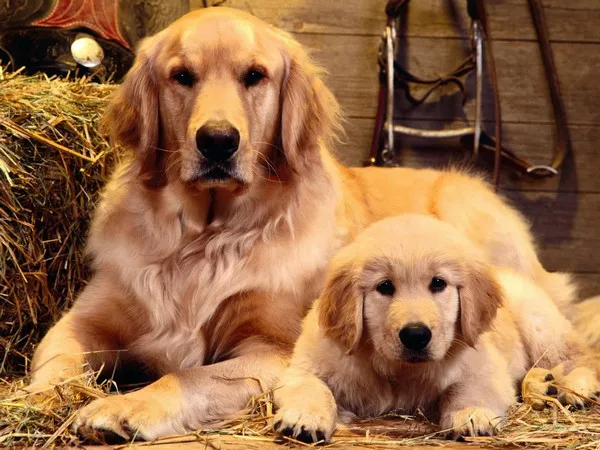Chow Chows are a unique and fascinating breed known for their distinct appearance and independent nature. However, they have occasionally been reported to exhibit aggressive behavior, including attacks on their owners. Understanding why this happens requires a deep dive into the breed’s characteristics, living habits, and the specific circumstances that can lead to such incidents. This article explores the reasons behind Chow Chows’ aggression towards owners, providing insights into their behavior and offering guidance on prevention and management.
Characteristics of the Chow Chow
Physical Appearance
Chow Chows are easily recognizable due to their lion-like mane and sturdy build. They typically weigh between 45-70 pounds and stand about 17-20 inches tall at the shoulder. Their dense double coat can be either rough or smooth and comes in various colors, including red, black, blue, cinnamon, and cream. One of their most distinctive features is their blue-black tongue, a trait unique to this breed and the Chinese Shar-Pei.
Temperament and Personality
Chow Chows are known for their independent and sometimes aloof nature. Unlike many other dog breeds, they are not typically eager to please and can be quite reserved, especially with strangers. They are often described as cat-like due to their dignified and somewhat standoffish demeanor. While they can be affectionate and loyal to their families, they usually form strong bonds with only one or two people.
Intelligence and Training
Chow Chows are intelligent dogs but can be quite stubborn. This independence can make training a challenge, particularly for inexperienced dog owners. Positive reinforcement methods work best, but consistency and patience are crucial. Early socialization is essential to help them become well-adjusted and reduce the likelihood of aggressive behavior.
Living Habits of Chow Chows
Exercise Needs
Chow Chows do not require as much exercise as some other breeds, but regular physical activity is important to keep them healthy and prevent boredom. A daily walk and some playtime in the yard are usually sufficient. They are not highly energetic and are generally content with moderate exercise.
Grooming Requirements
Chow Chows require regular grooming due to their thick double coat. Weekly brushing is necessary to prevent mats and tangles, and more frequent grooming may be required during shedding seasons. Regular grooming sessions also provide an opportunity to check for skin issues and maintain their overall health.
Living Environment
Chow Chows can adapt to various living environments, including apartments, provided they get enough exercise. However, they are best suited to homes with a secure yard where they can explore and play safely. They do not tolerate extreme heat well, so it’s important to ensure they have a cool place to rest during hot weather.
Causes of Aggression in Chow Chows
Lack of Socialization
One of the primary reasons for aggression in Chow Chows is inadequate socialization. Puppies need to be exposed to various people, animals, and environments from a young age to develop confidence and social skills. Without proper socialization, Chow Chows may become fearful or anxious, which can manifest as aggression.
Dominance and Territorial Behavior
Chow Chows have a strong sense of territory and can be quite protective of their home and family. This territorial instinct can sometimes lead to aggressive behavior, especially if they perceive a threat. Additionally, their independent nature can lead to dominance issues if not properly managed.
Fear and Anxiety
Fear is a common trigger for aggression in many dog breeds, including Chow Chows. If a Chow Chow feels threatened or cornered, it may resort to aggression as a means of self-defense. This fear can stem from various sources, such as past trauma, loud noises, or unfamiliar situations.
Health Issues
Pain or discomfort due to health issues can also cause a Chow Chow to become aggressive. Conditions such as hip dysplasia, thyroid problems, or skin infections can cause pain and irritability. Regular veterinary check-ups are essential to ensure any health problems are identified and treated promptly.
See Also: How Many Puppies Can a Chow Chow Have?
Lack of Leadership and Training
Chow Chows need a confident and consistent owner who can establish clear boundaries and leadership. Without proper training and leadership, they may become confused about their role within the household, leading to behavioral issues, including aggression. It is crucial to start training and establishing rules from a young age.
Preventing Aggression in Chow Chows
Early Socialization
Early socialization is key to preventing aggression in Chow Chows. Exposing puppies to different environments, people, and animals helps them develop into well-adjusted adults. Puppy classes and controlled playdates are excellent ways to provide positive social experiences.
Consistent Training
Consistent and positive training methods are essential for Chow Chows. Use reward-based training to encourage good behavior and discourage unwanted actions. Training should start early and continue throughout the dog’s life to reinforce good behavior and maintain a strong bond between the owner and the dog.
Regular Veterinary Care
Regular veterinary check-ups are vital to monitor the health of a Chow Chow and address any potential health issues that could lead to aggression. Pain management, nutritional support, and preventive care are all crucial components of maintaining a healthy and happy dog.
Creating a Safe Environment
Providing a safe and comfortable environment can help reduce stress and prevent aggressive behavior in Chow Chows. Ensure they have a designated space where they can retreat and relax. Avoid exposing them to stressful situations and monitor interactions with other pets and children.
Managing Aggressive Behavior
Identifying Triggers
Understanding and identifying the triggers for aggression is the first step in managing the behavior. Keep a journal of incidents to identify patterns and potential causes. Once triggers are identified, steps can be taken to avoid or mitigate these situations.
Seeking Professional Help
If aggression persists despite preventive measures, seeking the help of a professional dog trainer or behaviorist is recommended. A professional can assess the situation, provide a tailored behavior modification plan, and guide the owner in implementing it effectively.
Consistent Routine
Maintaining a consistent routine can help Chow Chows feel secure and reduce anxiety-related aggression. Regular feeding times, exercise routines, and training sessions provide structure and predictability, which can help manage behavior.
Safe Handling Techniques
Learning and using safe handling techniques is crucial for managing a potentially aggressive Chow Chow. Avoid direct confrontation and use positive reinforcement to encourage calm behavior. In cases of severe aggression, tools such as muzzles may be used temporarily under professional guidance.
Conclusion
Chow Chows are a unique and beautiful breed with specific characteristics and living habits. While they can exhibit aggressive behavior towards their owners, understanding the underlying causes and implementing preventive measures can significantly reduce the risk. Early socialization, consistent training, regular veterinary care, and creating a safe environment are key to raising a well-adjusted and happy Chow Chow. By taking a proactive approach and seeking professional help when needed, owners can enjoy a harmonious relationship with their Chow Chows and minimize the chances of aggression.
Related Topics:






















